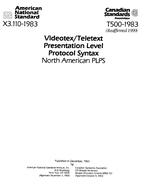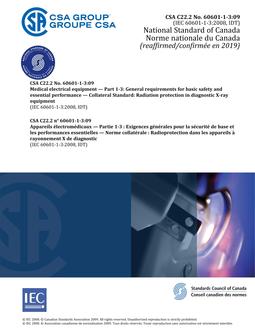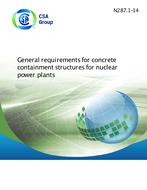Preface
This is the third edition of CSA C57, Electrical power connectors for use in overhead line conductors. It supersedes previous editions published in 1998 and 1966. This edition includes the following key revisions: a) Reference publications and definitions have been updated. b) Electrical and mechanical performance as applied to range-taking connectors has been clarified (see Clauses 4.2.1 and 4.4.7, respectively). c) An accelerated method for electrical performance has been included (see Clause 6.6.1.3). d) Testing requirements for connectors of similar design but of difference sizes has been specified (see Clause 5). e) An optional short-circuit test that can be specified by the purchaser has been included (see Clause 6.10). As experience with this optional test is gained, consideration will be given in the context of a future edition to specifying the short-circuit test as normative. f) The environmental test procedure has been revised (see Clause 8). g) Annex A has been clarified. h) Annex D has been expanded to provide additional guidance on test reports. i) Three new informative annexes have been included, as follows:
- i) Annex E on a sheave testing; ii) Annex F illustrating the types of connectors covered by this Standard; and iii) Annex G listing various conductor Standards.
Major funding in support of the consensus process of this Standard was provided by the Canadian Electricity Association (CEA), whose assistance is acknowledged with thanks.
Scope
1.1 This Standard specifies requirements for the mechanical, electrical, and environmental performance of connectors designed for installation on the bare surface of overhead line conductors at normal operating temperatures up to 100 °C. Note: Although the requirements of this Standard were developed primarily for connections to aluminum conductors, the requirements are also applicable to connectors for copper-to-copper or aluminum-to-copper conductors. 1.2 This Standard does not apply to station connectors. 1.3 In this Standard, “shall” is used to express a requirement, i.e., a provision that the user is obliged to satisfy in order to comply with the standard; “should” is used to express a recommendation or that which is advised but not required; and “may” is used to express an option or that which is permissible within the limits of the standard. Notes accompanying clauses do not include requirements or alternative requirements; the purpose of a note accompanying a clause is to separate from the text explanatory or informative material. Notes to tables and figures are considered part of the table or figure and may be written as requirements. Annexes are designated normative (mandatory) or informative (non-mandatory) to define their application. 1.4 The values given in SI units are the units of record for the purposes of this Standard. Where values are given in parentheses, they are for information and comparison only.
Product Details
- Edition:
- 3rd
- Published:
- 12/01/2016
- ISBN(s):
- 9781488303982
- Number of Pages:
- 58
- File Size:
- 1 file , 3.3 MB
- Product Code(s):
- 2424543, 2424543, 2424543


